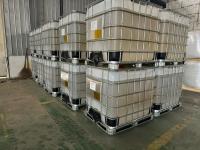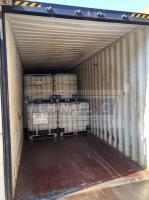Our Products
Product Center / Polyamine FL3235 equivalent model can be replaced by Chinafloc

Application of Polyamine (1050 Words)
Polyamine is a cationic organic coagulant widely used in water treatment, mining, papermaking, oil and gas operations, and industrial separation processes that require charge neutralization, turbidity reduction, and removal of suspended colloids. Because polyamine carries strong cationic charge density and excellent water solubility, it is known for its ability to destabilize negatively charged particles, improve coagulation efficiency, enhance downstream flocculation, and reduce the overall polymer dosage when used together with polyacrylamide. The following 1050-word explanation provides an in-depth overview of the major industrial applications of polyamine.
1. Municipal and Industrial Wastewater Treatment
One of the most important uses of polyamine is in wastewater treatment, where it acts as a primary coagulant or a coagulant aid before flocculation. Most wastewater systems contain negatively charged suspended solids, dissolved organics, colloids, humic acids, and color-causing substances. Polyamine, with its strong positive charge, neutralizes these particles almost instantly, causing them to agglomerate and form micro-flocs.
Municipal Wastewater Applications
In municipal plants, polyamine is commonly applied in:
-
Primary clarification
-
Secondary clarification after biological treatment
-
Tertiary polishing clarifiers
-
Phosphorus reduction systems
-
Sludge thickening and conditioning
By enhancing coagulation, polyamine helps reduce turbidity, color, biological solids, and overall TSS. It also allows operators to reduce or partially replace traditional inorganic coagulants like PAC, alum, or ferric chloride, which reduces sludge volume and improves dewatering.
Industrial Wastewater Applications
In industrial effluent systems, polyamine is used in:
-
Textile dyeing wastewater
-
Petrochemical and refinery wastewater
-
Paper mill white water
-
Food and beverage wastewater
-
Electronics and semiconductor wastewater
-
Steel mill and metalworking wastewater
In these systems, polyamine reacts strongly with dyes, emulsified oils, polymers, latexes, and fine colloidal particles. It enhances settling performance in clarifiers, reduces residual color, improves COD removal, and increases filterability of sludge.
2. Potable Water Treatment
Another major application of polyamine is in the treatment of drinking water. As a coagulating agent, polyamine helps remove:
-
Turbidity
-
Clay particles
-
Silt and mineral fines
-
Natural organic matter
-
Color-causing humic substances
-
Algae and biological materials
Using polyamine in potable water treatment reduces the need for alum or ferric salts, minimizes sludge volume, and supports the formation of denser, faster-settling flocs. This leads to improved filter run times and reduced backwash requirements. Because polyamine produces less residual metals than inorganic coagulants, it is commonly selected for high-purity drinking water systems.
3. Oil & Gas Industry and Produced Water Treatment
In the oil and gas sector, polyamine is used extensively for produced water and fracturing flowback water treatment. Oilfield wastewater contains emulsified oil droplets, suspended solids, drilling mud residues, silica, and fine clays. Polyamine breaks these emulsions, neutralizes surface charges, and helps separate oil from water.
Main oil & gas applications include:
-
Primary treatment of produced water
-
Oil–water separation in dissolved air flotation (DAF) units
-
Slop oil recovery
-
Demulsification support
-
Frac water recycling plants
-
SAGD and heavy oil steam systems
Because polyamine is lightweight and highly efficient at low dosages, it is frequently paired with anionic flocculants to achieve faster settling of solids and improved oil droplet coalescence.
4. Mining and Mineral Processing
Mining operations rely on polyamine in coagulation stages before thickening and clarification. Tailings and process water from mineral operations contain ultra-fine particles such as clays, silica, metal oxides, and flotation chemicals that remain suspended due to their negative charges.
Polyamine is particularly effective in:
-
Tailings thickener feed conditioning
-
Clarification of recycled process water
-
Removal of residual flotation reagents
-
Filtration enhancement
-
Soil or clay dispersion control
In coal preparation plants, polyamine improves fine-coal dewatering and enhances separation efficiency in thickener overflows. In metal ore operations such as copper, gold, iron ore, lead-zinc, and bauxite, polyamine improves particle settling and reduces turbidity in process water circuits.
5. Papermaking and Pulp Processing
In the papermaking industry, polyamine is used as a fixing agent, coagulant, and retention enhancer. Paper manufacturing produces large quantities of white water containing fibers, fines, fillers, dyes, and wet-strength additives. Many of these components are anionic and require charge neutralization.
Polyamine helps:
-
Improve retention of fillers (PCC, GCC, kaolin)
-
Reduce cationic demand in white water
-
Enhance drainage on the forming wire
-
Fix dissolved and colloidal substances
-
Improve wet-end chemistry stability
-
Reduce foam and improve machine efficiency





830_small.jpg)